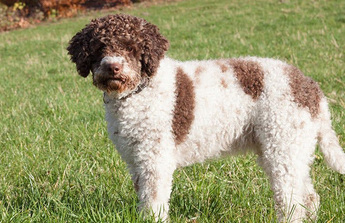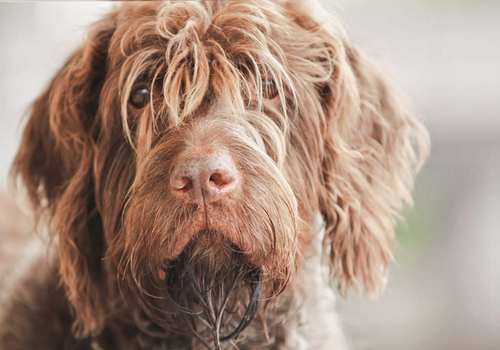Grooming the WPG isn’t difficult. His coat sheds a little throughout the year. It’s water-repellent and dries quickly after a bath or other wetting. Brush it weekly to remove dirt. You’ll also need to pluck out dead hairs, called “stripping” or “rolling” the coat. It’s easy to learn to roll the coat, and it’s not painful for the dog.
The Griff doesn’t need frequent baths; in fact, they’re probably counterproductive. It is a good idea, though, to rinse him thoroughly with fresh water to remove chemicals, bacteria, or salt any time he has been in a chlorinated pool, an algae-filled pond or lake, or the ocean.
The rest is basic care. Trim the nails as needed, usually every week or two. Brush the teeth frequently with a vet-approved pet toothpaste for good overall health and fresh breath. Keep the ears clean and dry to help ward off infections, especially if the dog goes swimming.
This is a hunting dog and was built for running and retrieving its prey. That’s why the Wirehaired Pointing Griffon needs about an hour of vigorous exercise every day.
Anything less and you’re tempting your dog to be destructive – and he’ll take it out on anything inside your house. So to keep him happy and healthy, take him for walks, runs, jogs, hikes and swims.
Because of his exercise demands, a Griff does best in the country or a home with a yard. If you have a pool, he’ll want to go for frequent swims. Apartments are not recommended for this breed.
This is an active breed, so you’ll have to make sure you’re giving your Wirehaired Pointing Griffon enough to eat. Be sure to feed your Griff a high-quality kibble twice a day, usually about 2 to 2.5 cups, depending on the brand of dog food.
They should do well on a high-qualitydog food, whether commercially manufactured or home-prepared with your veterinarian’s supervision and approval. Any diet should be appropriate to the dog’s age (puppy, adult, or senior). Some dogs are prone to gettingoverweight, so watch your dog’s calorie consumption and weight level.
Treatscan be an important aid in training, but giving too many can cause obesity. Learn about whichhuman foodsare safe for dogs, and which are not. Check with your vet if you have any concerns about your dog’s weight or diet.Clean, fresh water should be available at all times.
There are several health andgenetic screeningconsiderations specific to the Griffon. While the occurrence ofhip dysplasiain the Griffon is relatively low, it is still important that dams and sires obtain either OFA or PennHIP clearances. Some breeders also obtain medical clearances for eye, heart, elbow, and thyroid conditions.
Even though this is an intelligent breed, you may find the Wirehaired Pointing Griffon a bit difficult to train. This is because your dog may have a mind of its own and have different ideas about what they want to do. If your Griff is bored or doesn’t like the way you are training him, don’t be surprised if he just walks away.
To keep your dog interested in training, keep these sessions short and use rewards as motivation. Make sure that training is consistent and always maintain boundaries to keep your position as the head of the household. It doesn’t take much for the Griff to get a handle on what acceptable or not acceptable to do, and if you slack off, he’ll make his own rules.
Socialization is key in any dog’s life, and this is especially true with the Wirehaired Pointing Griffon. If you don’t introduce your Griff to new people and situations, he can become sheltered and less self-assured of himself. This causes a slew of problems, including social anxiety and makes him difficult to live with.











